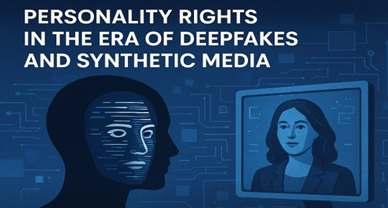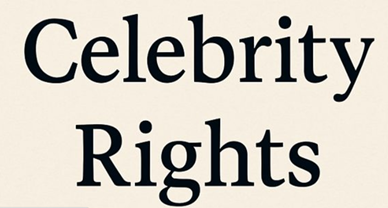Battling Music Plagiarism: Ip Law in Bollywood’s Soundscape
Introduction:
Bollywood music is the heartbeat of Indian cinema. It is what brings the stories, the emotions, and the characters to life. Adding magic to the plot, a song in a Bollywood movie is like salt in food. Yet, behind the magic lurks a long-standing challenge- music plagiarism. For decades, Bollywood tracks have faced accusations of copying tunes either from international hits, regional music, folk songs, or from within the industry itself. This undermines genuine talent while also raising serious legal questions. With Intellectual Property (“IP”) laws becoming stronger in India, plagiarism is no longer an issue that can be swept under the rug anymore. It is necessary to preserve creativity and most importantly maintain artistic integrity.
The soundscape of Bollywood is diverse. It draws from Indian classical music, folk traditions, western pop, jazz, techno, and everything in between. The global recognition that Bollywood music has is because of this range and versatility. However, critics often point out how frequently Bollywood has borrowed or sometimes blatantly copies tunes without permission. For example, several iconic songs have been accused of resembling Western hits. Earlier audiences had limited access to global music, making it easy to pass off plagiarized versions as original but the internet and streaming platforms today have eliminated this loophole. Today, a copied song can be identified within seconds, damaging reputation and inviting lawsuits.
What counts as Music Plagiarism?
Music Plagiarism goes beyond outright copying. Some common forms include:
- Direct copying i.e. reproducing entire melodies, hooks, or background scores.
- Sampling without permission i.e. using portions of a song or recording without the creator’s permission/ authorization.
- Infringement disguised as “Inspiration” i.e. drawing “inspiration” but crossing the thin line where the resemblance is so striking that it may be enough to cause legal issues.
- Plagiarizing lyrics wherein lines or verses on songs are copied verbatim.
How is “Musical work” defined under the Indian Copyright Act?
Under Section 2(p) of the Indian Copyright Act, 1975, a “musical work” is defined as a work consisting of music and includes any graphical notation of such work but does not include any words or any action intended to be sung, spoken or performed with music.[1] Simply, it means that the musical composition, which is the melody, harmony, or even the arrangement can be protected independently from the song’s lyrics. The composer is considered as the author of the musical work as per Section 2(d)(ii) of the Indian Copyright Act.[2] Once created and fixed in a tangible form like a recording or written in notation, this musical work is automatically protected by Copyright. So, copyright starts the moment a song or lyric is fixed in writing or recording. This protection gives the composer exclusive rights to reproduce, perform, adapt, or license the music, making it unlawful for anyone to use the original composition without permission- even if they do not use the lyrics or the exact recording.
Copyright battles from Bollywood:
While the law sets a foundation for the protection of creator rights, real-life examples bring its impact into relief for Bollywood’s creative community. Over the years, several court cases and public controversies have molded the industry’s understanding of plagiarism and the practical application of copyright law. The landmark judgement of the Supreme Court of India in the case of R. G. Anand v. Deluxe Films (1978)[3] helped define the boundary between “inspiration” and “copying.” When a playwright noticed that the story thread of his play very closely mimicked in a movie, he moved the court. The judges ruled that ideas and basic plots are not protected but if the unique expression is substantially copied, it crosses the line of infringement. This principle helps creators understand that the influence may be inevitable but its replication if not excusable by law.
Music label Saregama India Ltd. sued Maddock Films over the song “Odhani” in Made in China (2019), alleging it closely resembled the 1985 Gujarati track “Ke Odhni Odhu Ne Udi Jaye.” The case[4] was settled out of court by a settlement agreement between the two parties with Maddock Films acknowledging the rights of Saregama India Ltd. on the said song.[5]
In another case[6] where a composer sued the producers of a Bollywood film “Krazzy 4.” Famous music composer Ram Sampath accused the filmmakers of the said film of lifting portions of his composition “The Thump” which he originally created as an Ad jingle for Sony Ericson and using it in two songs “Break Free” and “Krazzy 4 (Remix)” without his permission. The Bombay High Court allowed the producer, Mr. Rakesh Roshan, to reach an out-of-court settlement with Mr. Sampath. Earlier, the court had restrained Mr. Roshan from releasing the star-studded film unless the tracks under dispute were removed. After the said settlement, the film got released the very next day on April 11, 2008.[7] This case showed us how even established figures of the industry are not immune to copyright law.
Switching our lens to the south, the iconic film Kantara had a copyright infringement controversy[8] too. Kantara was a visually stunning film which blended myth, folklore, and raw human emotions. The soundscape of the film was as appealing as its visuals but when the song “Varaha Roopam” became popular, a Kerala-based band Thaikkudam Bridge alleged that it plagiarized their title track “Navarasam.” The dispute led to an interim court ban on the streaming of “Varaha Roopam”[9] and sparked nationwide debate on music copyright enforcement.
Frequently, the industry’s own superstars find themselves at the center of such debates, for instance, songs by Bappi Lahiri and the legendary R. D. Burman have, over the years, alternately inspired and confronted accusations of imitation. R. D. Burman’s “Mehbooba Mehbooba” is well-documented as having been influenced by a Cypriot folk tune, which he famously admitted to this in interviews. Many other famous songs such as “Pyaar Tune Kya Kiya”, “Pehli Nazar”, “Zaalima”, “Pal Pal”, “Kambakhta Ishq”, and many more have been heavily “inspired” and almost copied from many not-so niche western songs.[10]
How can Bollywood strike the right note when it comes to copyright?
These stories of court cases are more than just footnotes in legal history of copyright, they are cautionary tales and learning moments, offering unexpected tribute to the universal language of music. To reduce plagiarism and protect the music creators, education of artists and producers about copyright, licensing, and legal resources is very important. Encouraging early copyright registration, membership of the Indian Performing Right Society (“IPRS”) for royalty protection, setting up industry bodies to pre-screen songs for originality before release are some preventive measures that can help the stakeholders in the industry.
Why does Plagiarism persist despite laws?
There is intense commercial pressure on composers by the film makers who want catchy songs quickly. Coming up with a “viral” song which eventually becomes a trend on social media is a major requirement for a film maker and sometimes copy-paste is the easiest way out. Many creators don’t know their rights or the importance of registration and licensing. There is always a sort of grey area of inspiration. What counts as inspiration and what crosses into plagiarism are often subjective debates. Litigation is also expensive and slow, which further discourages some creators from pursuing justice.
Conclusion:
Bollywood’s musical heartbeat deserves respect and protection. Plagiarism has long dogged the industry, however, newer and stronger laws, growing legal awareness, and judicial precedents are set to change the tune. Protection of originality is not only about avoiding potential lawsuits but honoring the artistry and passion behind every melody and lyric. Creators empowered by copyright knowledge and backed by bodies like the IPRS also need the support of the community as well as the industry to keep their beautiful additions to Bollywood’s larger-than-life cinema.
Author:–Durva Shinde, in case of any queries please contact/write back to us at support@ipandlegalfilings.com or IP & Legal Filing.
[1] Indian Copyright Act, 1975, Section 2(p).
[2] Section 2(d)(ii) “author” means……(ii) in relation to a musical work, the composer.
[3] R. G. Anand v Deluxe Films and Ors. AIR 1978 SC 1613
[4] Saregama India Limited vs. Maddock Films Private Limited (26.09.2019 – DELHC) : MANU/DE/3493/ MANU/DE/3493/2019
[5] Akshita Saxena, “Delhi HC Refuses To Grant Ad-Interim Injunction To Saregama For Copyright Infringement”, LiveLaw, Last Accessed: 5th September 2025, https://www.livelaw.in/news-updates/refuses-to-grant-ad-interim-injunction-to-saregama-148993?from-login=161936
[6] Ram Sampath vs. Rajesh Roshan and Ors. (09.04.2008 – BOMHC) MANU/MH/1429/2008
[7] TNM Staff, Kantara row: A look at six songs that stood trial over copyright violations in India, The News Minute, Last Accessed: 5th September 2025, https://www.thenewsminute.com/karnataka/kantara-row-look-six-songs-stood-trial-over-copyright-violations-india-169252
[8] Hombale Films LLP vs. Thaikkudam Bridge and Ors. (23.11.2022 – KERHC) : MANU/KE/3313/2022
[9] Aneesha Mathur, Kantara plagiarism row: Big relief for producer, director as SC says song doesn’t need to be removed, The Times of India, Last Accessed: 5th Spetember 2025, https://www.indiatoday.in/law/story/sc-relief-to-kantara-film-producer-actor-in-varaharoopam-song-plagiarism-row-2332973-2023-02-10
[10] Ria Chopra, 20 Famous Hindi Songs That You Might Not Know Are Heavily “Inspired” From Existing Music, BuzzFeed, Last Accessed: 5th September 2025, https://www.buzzfeed.com/riachops/famous-hindi-songs-that-are-copied



